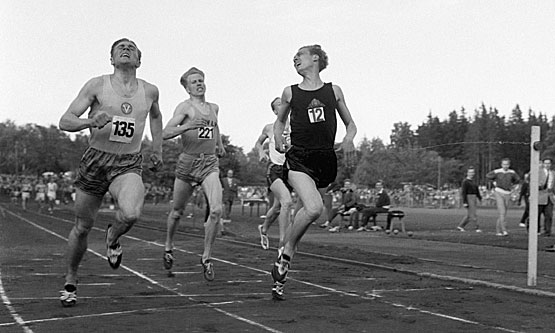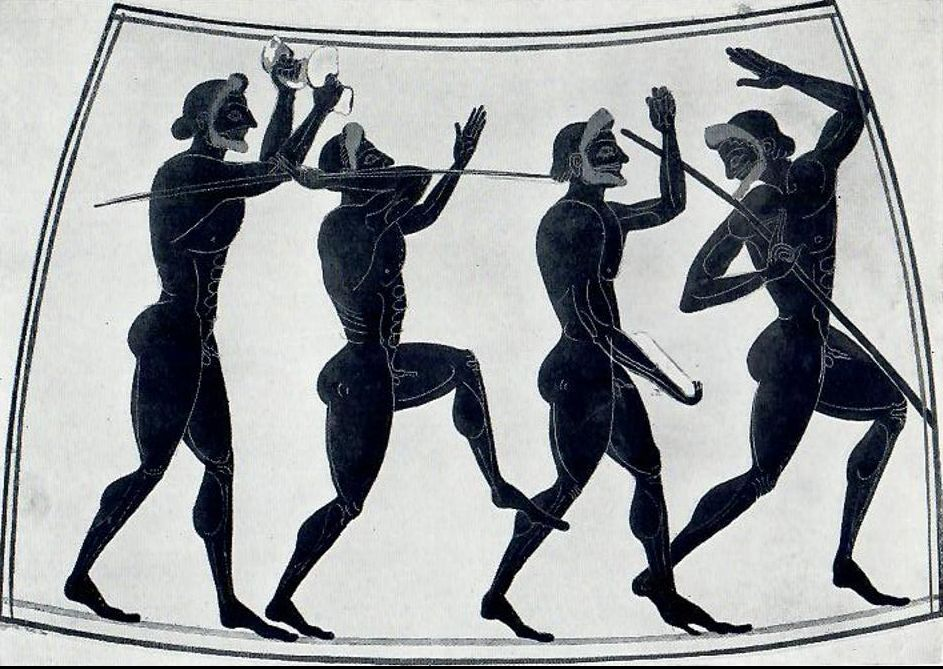|
Activision Decathlon
''The Activision Decathlon'' is a sports video game written by David Crane for the Atari 2600 and published by Activision in 1983. It was ported to the Atari 8-bit computers, Atari 5200, Commodore 64, ColecoVision, and MSX. Up to four players compete in the ten different events of a real-life decathlon, either in sequence or individually. Gameplay The events are: #100-Meter Dash #Long Jump #Shot Put #High Jump # 400-Meter Race # 110-Meter Hurdles #Discus Throw #Pole Vault #Javelin Throw # 1500-Meter Race Activision Decathlon Club patches A player whose score met or exceeded the values below could send photo documentation to receive an Activision Decathlon Club patch in one of the colors of an Olympic medal: * 8,600 points: Bronze * 9,000 points: Silver * 10,000 points: Gold Reception Shortly after release, Activision's ''Decathlon'' drew comparisons to Konami's popular arcade game ''Hyper Olympic'' (''Track & Field''), which was introduced at the Amusement Machine Show a m ... [...More Info...] [...Related Items...] OR: [Wikipedia] [Google] [Baidu] |
Activision
Activision Publishing, Inc. is an American video game publisher based in Santa Monica, California. It serves as the publishing business for its parent company, Activision Blizzard, and consists of several subsidiary studios. Activision is one of the largest third-party video game publishers in the world and was the top United States publisher in 2016. The company was founded as Activision, Inc. on October 1, 1979, in Sunnyvale, California, by former Atari, Inc., Atari game developers upset at their treatment by Atari in order to develop their own games for the popular Atari 2600 home video game console. Activision was the first independent, third-party, console video game developer. The video game crash of 1983, in part created by too many new companies trying to follow in Activision's footsteps without the experience of Activision's founders, hurt Activision's position in console games and forced the company to diversify into games for home computers, including the acquisition ... [...More Info...] [...Related Items...] OR: [Wikipedia] [Google] [Baidu] |
Long Jump
The long jump is a track and field event in which athletes combine speed, strength and agility in an attempt to leap as far as possible from a takeoff point. Along with the triple jump, the two events that measure jumping for distance as a group are referred to as the "horizontal jumps". This event has a history in the ancient Olympic Games and has been a modern Olympic event for men since the first Olympics in 1896 and for women since 1948. Rules At the elite level, competitors run down a runway (usually coated with the same All-weather running track, rubberized surface as running tracks, crumb rubber or vulcanized rubber, known generally as an all-weather track) and jump as far as they can from a wooden or synthetic board, 20 centimetres or 8 inches wide, that is built flush with the runway, into a pit filled with soft damp sand. If the competitor starts the leap with any part of the foot past the foul line, the jump is declared a foul and no distance is recorded. ... [...More Info...] [...Related Items...] OR: [Wikipedia] [Google] [Baidu] |
Video (magazine)
''Video'' is a discontinued American consumer electronics magazine that was published from 1977 to 1999 by Reese Communications with a focus on video and audio devices. The magazine showcases new audiovisual products, analyzes current practices and trends in the field, and provides critical reviews of newly marketed products and equipment. During its early years, it competed fiercely with contemporary journals like ''Video Review'' and ''Video Buyer's Review''—ultimately culminating in a 1980 trademark infringement suit over use of the term "Video Buyer's Guide". In March 1995, ''Video'' was acquired from Reese by Hachette Filipacchi, and in 1999 it was merged with their bi-monthly ''Sound & Image'' magazine to become '' Sound & Vision''. Today, the legacy of ''Video'' lies in the history of video game journalism as its regular column, "Arcade Alley", represents the earliest example of a video game column in a mainstream publication. Arcade Alley is credited with having popular ... [...More Info...] [...Related Items...] OR: [Wikipedia] [Google] [Baidu] |
Cash Box
''Cashbox'', also known as ''Cash Box'', is an American music industry trade magazine, originally published weekly from July 1942 to November 1996. Ten years after its dissolution, it was revived and continues as ''Cashbox Magazine'', an online magazine with weekly charts and occasional special print issues. In addition to the music industry, the magazine covered the amusement arcade industry, including jukebox machines and arcade games. History Print edition charts (1942–1996) ''Cashbox'' was one of several magazines that published record charts in the United States. Its most prominent competitors were ''Billboard (magazine), Billboard'' and ''Record World'' (known as ''Music Vendor'' prior to April 1964). Unlike ''Billboard'', ''Cashbox'' combined all currently available recordings of a song into one chart position with artist and label information shown for each version, alphabetized by label. Originally, no indication of which version was the biggest seller was given, but f ... [...More Info...] [...Related Items...] OR: [Wikipedia] [Google] [Baidu] |
Amusement Machine Show
The Japan Amusement Expo (JAEPO) is an annual trade fair for amusement arcade products, such as arcade games, redemption games, amusement rides, vending machines, and change machines. The event is hosted one weekend per year in the Greater Tokyo Area. The event is held at the Makuhari Messe convention center in Chiba, Chiba, Chiba. JAEPO is one of the largest amusement-machine trade fairs in the world. It is organised by the combined efforts of the Japan Amusement Machine and Marketing Association (JAMMA) and the Amusement Machine Operators' Union (AOU). Before 2012, these organisations each produced separate trade fairs in Greater Tokyo: the Amusement Machine (AM) Show and the AOU Show, respectively. History The Amusement Machine Show, or AM Show, was sponsored by the Japan Amusement Machinery Manufacturers Association (JAMMA) and the Japan Amusement Park Equipment Association (JAPEA). In 2012, JAMMA and JAPEA merged and reincorporated as the Japan Amusement Machine and Marketi ... [...More Info...] [...Related Items...] OR: [Wikipedia] [Google] [Baidu] |
Track & Field (video Game)
''Track & Field'', also known as in Japan and Europe, is an Olympic-themed sports video game developed by Konami and released as an arcade video game in 1983. The Japanese release featured an official license for the 1984 Summer Olympics. In Europe, the game was initially released under the Japanese title ''Hyper Olympic'' in 1983, before being re-released under the US title ''Track & Field'' in early 1984. Players compete in a series of events, most involving alternately pressing two buttons as quickly as possible to make the onscreen character run faster. The game uses a horizontal side-scrolling format, displaying one or two tracks at a time, a large scoreboard that shows world records and current attempts, and a packed audience in the background. The game was a worldwide commercial success in arcades, becoming one of the most successful arcade games of 1984. Konami and Centuri also organized a 1984 ''Track & Field'' video game competition that attracted more than a million ... [...More Info...] [...Related Items...] OR: [Wikipedia] [Google] [Baidu] |
Konami
, commonly known as Konami, , is a Japanese multinational entertainment company and video game developer and video game publisher, publisher headquartered in Chūō, Tokyo, Chūō, Tokyo. The company also produces and distributes trading cards, anime, ''tokusatsu'', pachinko machines, slot machines, and List of Japanese arcade cabinets, arcade cabinets. It has casinos around the world, and operates health and physical fitness clubs across Japan. The company originated in 1969 as a jukebox rental and repair business in Toyonaka, Osaka, Japan, by Kagemasa Kōzuki, who remains the company's chairman. Additionally, Konami owns Bemani, known for ''Dance Dance Revolution'' and ''Beatmania'', as well as the assets of former game developer Hudson Soft, known for ''Bomberman'', ''Adventure Island (video game), Adventure Island'', ''Bonk (series), Bonk'', ''Bloody Roar'', and ''Star Soldier''. Konami is the twentieth-largest Lists of video game companies, game company in the world by re ... [...More Info...] [...Related Items...] OR: [Wikipedia] [Google] [Baidu] |
1500 Metres
The 1500 metres or 1500-metre run is the foremost middle distance track event in athletics. The distance has been contested at the Summer Olympics since 1896 and the World Championships in Athletics since 1983. It is equivalent to 1.5 kilometers or approximately miles. The event is closely associated with its slightly longer variant, the mile run, from which it derives its nickname "the metric mile". The demands of the race are similar to that of the 800 metre run, but with a slightly higher emphasis on aerobic endurance and a slightly lower sprint speed requirement. The 1500-metre run is predominantly aerobic, but anaerobic conditioning is also required. Each lap run during the men's world-record race of 3:26.00, run by Hicham El Guerrouj of Morocco in 1998, averaged just under 55 seconds per lap. Since El Guerrouj, only three other men in history have broken the 3:27 barrier; Bernard Lagat, Asbel Kiprop, and Jakob Ingebrigtsen. El Guerrouj remains the only man ... [...More Info...] [...Related Items...] OR: [Wikipedia] [Google] [Baidu] |
Javelin Throw
The javelin throw is a track and field event where the javelin, a spear about in length, is thrown as far as possible. The javelin thrower gains momentum by running within a predetermined area. Javelin throwing is an event of both the men's decathlon and the women's heptathlon. History The javelin throw was added to the Ancient Olympic Games as part of the pentathlon in 708 BC. It included two events, one for distance and the other for accuracy in hitting a target. The javelin was thrown with the aid of a thong (''Amentum, ankyle'' in Greek) that was wound around the middle of the shaft. Athletes held the javelin by the ''ankyle'', a leather strap around the shaft, so when they released the javelin, the unwinding of the thong gave the javelin a spiral trajectory. Throwing javelin-like poles into targets was revived in Germany and Sweden in the early 1870s. In Sweden, these poles developed into the modern javelin, and throwing them for distance became a common event ther ... [...More Info...] [...Related Items...] OR: [Wikipedia] [Google] [Baidu] |
Pole Vault
Pole vaulting, also known as pole jumping, is a track and field event in which an athlete uses a long and flexible pole, usually made from fiberglass or carbon fiber, as an aid to jump over a #bar, bar. Pole jumping was already practiced by the Ancient Egypt, ancient Egyptians, Ancient Greece, ancient Greeks and the Gaelic Ireland, ancient Irish people, although modern pole vaulting, an athletic contest where height is measured, was first established by the German teacher Johann Christoph Friedrich GutsMuths in the 1790s. It has been a full medal event at the Olympic Games since Athletics at the 1896 Summer Olympics, 1896 for men and since 2000 Summer Olympics, 2000 for women. It is typically classified as one of the four major jumping events in Sport of athletics, athletics, alongside the high jump, long jump and triple jump. It is unusual among track and field sports in that it requires a significant amount of specialised equipment in order to participate, even at a basic leve ... [...More Info...] [...Related Items...] OR: [Wikipedia] [Google] [Baidu] |
Discus Throw
The discus throw (), also known as disc throw, is a track and field sport in which the participant athlete throws an oblate spheroid weight (object), weight called a discus in an attempt to mark a further distance than other competitors. It is an classical antiquity, ancient sport, as demonstrated by the fifth-century-BC Myron statue ''Discobolus''. Although not part of the current pentathlon, it was one of the events of the Ancient Olympic pentathlon, ancient Greek pentathlon, which can be dated back to at least 708 BC, and it is part of the modern decathlon. History The sport of throwing the discus traces back to it being an event in the Ancient Olympic Games, original Olympic Games of Ancient Greece. The discus as a sport was resurrected in Magdeburg, Germany, by gymnastics teacher Christian Georg Kohlrausch and his students in the 1870s. Organized men's competition was resumed in the late 19th century, and has been a part of the modern Summer Olympic Games since the fi ... [...More Info...] [...Related Items...] OR: [Wikipedia] [Google] [Baidu] |
110 Metre Hurdles
The 110 metres hurdles, or 110-metre hurdles, is a hurdling track and field event for men. It is included in the athletics programme at the Summer Olympic Games. The female counterpart is the 100 metres hurdles. As part of a racing event, ten hurdles of in height are evenly spaced along a straight course of 110 metres. They are positioned so that they will fall over if bumped into by the runner. Fallen hurdles do not carry a fixed time penalty for the runners, but they have a significant pull-over weight which slows down the run. Like the 100 metres sprint, the 110 metres hurdles begins in the starting blocks. For the 110 m hurdles, the first hurdle is placed after a run-up of 13.72 metres (45 ft) from the starting line. The next nine hurdles are set at a distance of 9.14 metres (30 ft) from each other, and the home stretch from the last hurdle to the finish line is 14.02 metres (46 ft) long. The Olympic Games have included the 11 ... [...More Info...] [...Related Items...] OR: [Wikipedia] [Google] [Baidu] |








